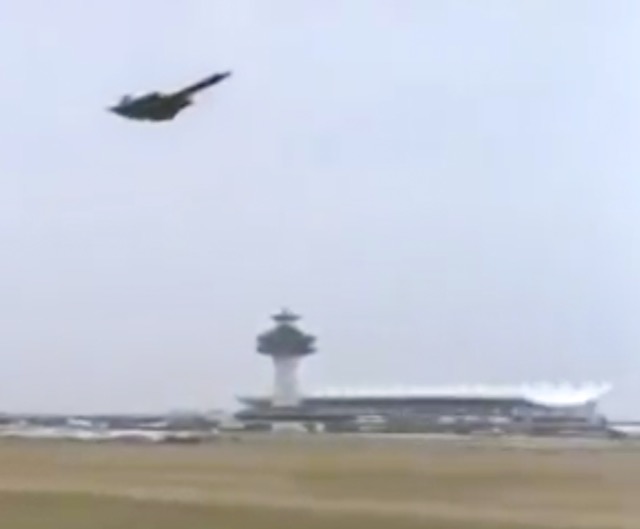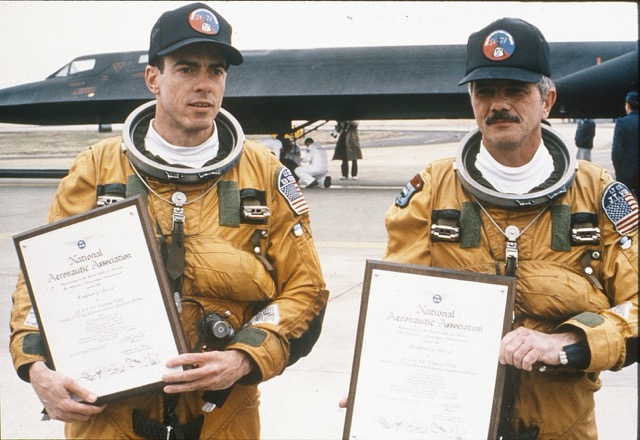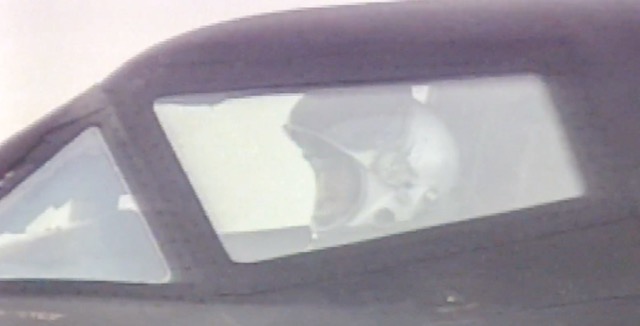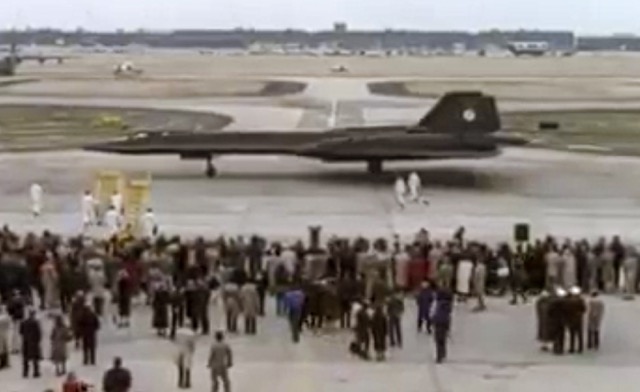Blackbird Pilot, Ed Yeilding
By Jerry Soifer
Ed Yeilding was debating his father, Bill, in 1969. Ed was beginning work toward a Bachelor of Science degree in electrical engineering at Auburn University in Alabama with the intent of a career in military aviation. Dad urged his son to choose the U.S. Navy, which he had served during World War II.
But son Ed joined the Air Force ROTC (Reserve Officers’ Training Corps) at Auburn, hoping to one day fly the SR-71. Nicknamed the “Blackbird,” the triple-sonic spy plane, placed into service three years earlier, remains today the fastest (Mach 3.2) and highest flying (85 thousand feet) level flight aircraft ever built.
Entering active duty upon graduation from Auburn in 1972, Yielding initially flew RF-4 Phantom Jets, then the F-4E. His excellence led to the cherished goal of piloting the legendary Blackbird
Fast-forward to March 6, 1990. Yeilding’s father, Bill, and mother, Carolyn, were among thousands crowding the grounds at Dulles International Airport in northern Virginia, awaiting their son’s landing on a record-setting transcontinental flight.

In less time than it can take to collect baggage at LAX, Lt. Col. Ed Yeilding and Lt. Col. Joseph “J.T.” Vida flew the 2,404 miles from Palmdale to Dulles (“Radar fixes” timed from LAX to Dulles) in 64 minutes and 20 seconds, at an average speed of 2,124.5 miles per hour. It was that Blackbird’s final flight, before retirement in the Smithsonian.
“The chances of me having that opportunity were slim to none,” Yeilding said. “It really is amazing how that happened. I feel so blessed.”
His achievements have not been forgotten. Next Friday, October 25, U.S. Air Force Lt Col (ret) Ed Yeilding will be honored at the March Air Museum’s Champions of Flight Annual Dinner.
In honoring Yeilding, the museum states, “The Champions of Flight award recognizes the extraordinary men and women who have pushed the boundaries of aviation, challenging the limits of human achievement and inspiring generations to reach for the skies. Lt. Col. Ed Yeilding exemplifies the spirit of innovation and courage that this award represents.”
He flew 93 overseas reconnaissance missions in the SR-71, an aircraft capable of outracing surface-to-air missiles.
In 1986, during the Cold War, Yeilding was flying when he saw a Soviet MiG attempt a zoom climb, no closer than eight miles, then fell away, out of airspeed. Yeilding stayed on track and captured the target images for the mission.
Yeilding reveals, “The SR-71 simulator training was extremely valuable! It had no outside visual screens and no motion as modern simulators have. We did have a seat shaker to help simulate supersonic unstarts and engine failures. All the simulator gauges simulated real flight, so we practiced various emergencies, malfunctions, and combinations of malfunctions. Once we gained confidence in the simulator that we could handle anything that could possibly go wrong.”
“Flying the SR-71 was pure joy, and we looked forward to every flight and the interesting challenges that often occurred. Plus, we took great pride in doing something important for our country and the cause of freedom.”
Yeilding and J.T. Vida were later the senior pilot and RSO (reconnaissance systems officer) at the test facility in Palmdale. Vida died two years after the record flight.

Yeilding reached the pinnacle of aviation because of his ambition and engineering know-how, said retired Air Force Lt. Col. Thomas Fuhrman, an RSO who flew with Yeilding for two years.
“I had supreme confidence in Ed,” said Fuhrman. “He definitely has the ‘Right Stuff’ and this is why he was chosen from the operational crew force to join the flight test crew force.” Acknowledging the difficulty in flying the SR-71 because of its complexity, Fuhrman said that Yeilding had the savvy to cope with the problems presented by the high-performance aircraft.
One of Yeilding’s more memorable flights came in 1989 when he did a fly-by for Lockheed workers at the Skunk Works in Burbank, those who had built the famed plane. Also observing was legendary engineer Clarence “Kelly” Johnson, who designed many of the aircraft’s innovations.
Yeilding turned on the afterburners and wagged his wings as he flew away, and was later informed that Kelly, then confined to a wheelchair, had tears in his eyes.
After his SR-71 days ended, Yeilding became a pilot at Andrews AFB, shuttling federal government officials to various assignments. Retiring after 23 years of service, he became a commercial airline pilot for Northwest Airlines, retiring again in 2009 when the airline merged with Delta.
After the flight to Dulles in 1990, that SR-71, tail number 61-7972, was retired and is now on exhibit at the Smithsonian’s National Air and Space Museum in Chantilly, Virginia.
Tickets for next Friday’s Champions of Flight event are $125 for admission and dinner and can be purchased at https://www.marchfield.org/cof/.

For More Visit www.zapinin.com


